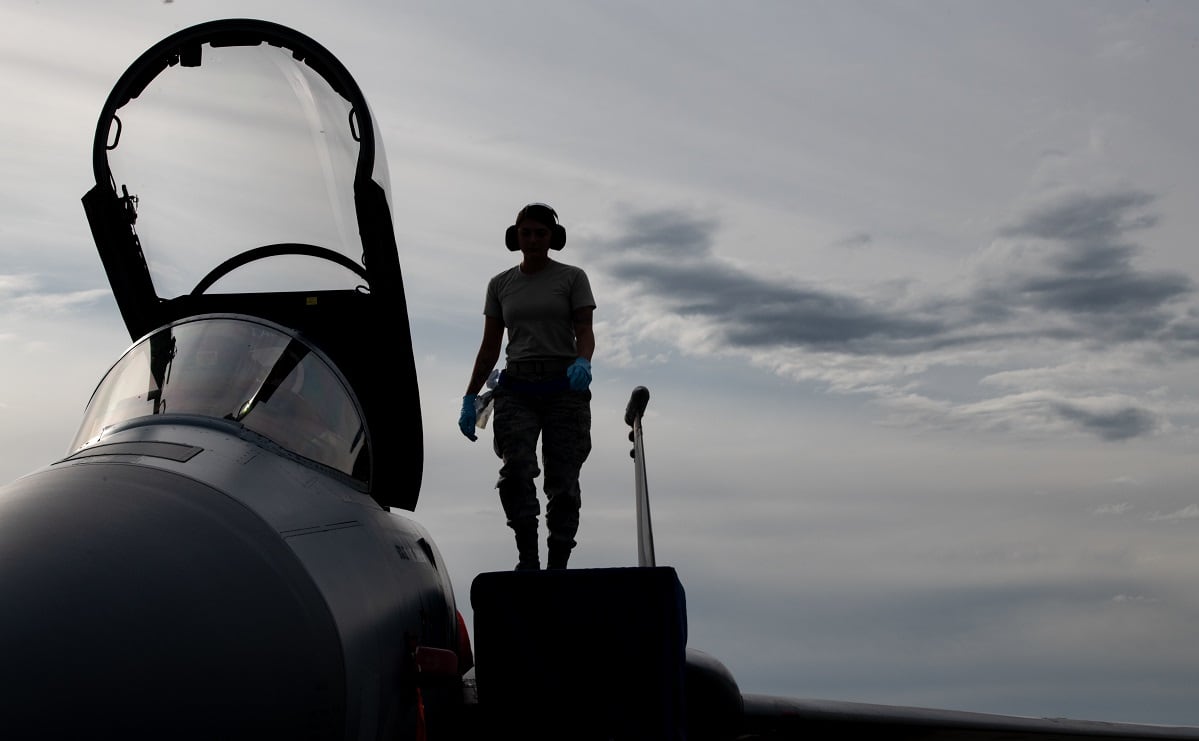The Air Force is planning for its smallest end strength increase since the end of last decade’s drawdown in the proposed budget for fiscal 2021.
The spending plan, announced by the Pentagon Monday, would increase the total Air Force — including the newly created Space Force — by 1,500, to 512,100. Since the two-year, sequestration-driven drawdown ended in 2015, the total force has typically grown by about 4,000 or 5,000 each year. Last year, the total force end strength grew by 4,400.
In 2018, Air Force Chief of Staff Gen. Dave Goldfein said he hoped to “set the throttle” of end strength growth at about 3,300 each year after fiscal 2019. But this budget would fall far short of that goal.
On the active duty side, the budget would add what it called “modest growth” of 760 more airmen and 140 additional active-duty members of the Space Force. This would bring the Air Force active-duty end strength to 333,100, and the Space Force active-duty end strength — including some transfers of airmen to the Space Force — to about 600, for a total of 333,700. The Air Force’s active-duty end strength for fiscal 2020 is 332,800.
The Air Force Reserve would grow by just 200 to 70,300, and the Air National Guard would grow from 107,700 to 108,100.
The budget also includes 6,434 authorizations that would be transferred to the Space Force.
The Air Force said in budget documents it also plans to move some airmen from legacy systems to newer capabilities.
When Goldfein in 2018 discussed his hopes of growing the force, he said rebuilding end strength was a crucial first step in fixing morale troubles plaguing undermanned and under-resourced bases in the continental United States.
“Morale and readiness are inextricably linked,” Goldfein said at a 2018 breakfast with reporters.
Nearly half of the Air Force’s 2021 growth would go to aircraft maintainers, which would grow by 485 on the active-duty side and 157 in the reserves. The budget said the requested manning growth “mitigates shortages in some of our operational squadrons,” and supports efforts to bring on new F-35 fighters and KC-46 Pegasus tankers. The Air Force spent years correcting a severe shortfall in maintainers that at one point left the service short by 4,000 airmen.
As the Air Force has struggled to stem an alarming increase in deaths by suicide, the budget calls for expanding the Task Force True North program with 80 additional active-duty airmen at high-tempo units. Task Force True North, a mental health and resiliency program that began in 2017, embeds licensed clinical social workers and mental health providers in units so they can interact with airmen on a daily basis. Deaths by suicide among Air Force service members and civilians spiked by one-third last year, to 137.
Also among active-duty airmen, the Air Force also wants to add 108 more airmen in combat support, 68 more aviators, and 19 more cyber airmen.
The budget also calls for 43 more aviation reservists. This will help it prepare to increase crew ratios as the Reserve moves from the older KC-135 tanker to the KC-46.
The Air National Guard would gain 50 cyber airmen, 83 space, nuclear and command and control operations airmen, 150 logistics airmen, 101 security forces airmen, and 16 combat support airmen. These increases will support the 9th Air Force Joint Task Force, space and cyber missions, the budget overview said, as well as increasing the deployment readiness of the guard’s tanker force and the readiness of its combat Air Forces.
And the budget calls for further integrating the virtual reality program known as Pilot Training Next into how the Air Force trains its aspiring pilots.
Stephen Losey is the air warfare reporter for Defense News. He previously covered leadership and personnel issues at Air Force Times, and the Pentagon, special operations and air warfare at Military.com. He has traveled to the Middle East to cover U.S. Air Force operations.





